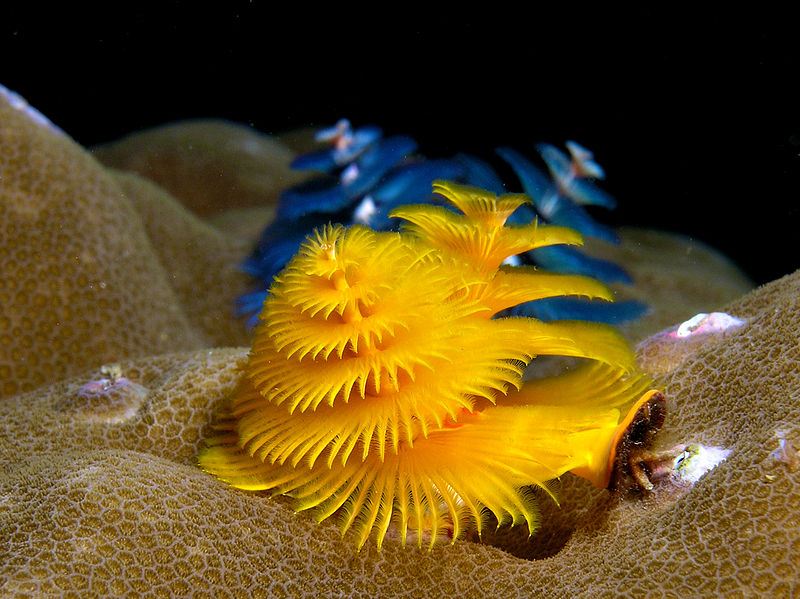Christmas Tree Worm Facts
- First of all, the Christmas Tree Worm really stands out from its many related species. The creature remains a particularly fascinating specimen of a tube-building polychaete worm, for a specific reason. Its common name derives from its obvious resemblance to a Christmas tree.
- Furthermore, while it holds no importance to commercial fishing, it nevertheless has its own popularity with many people. Quite understandably, it remains popular with at least two categories of individuals. That group consists of divers and underwater photographers.
- In addition, this species possesses both male and female genders, unlike some of its relatives. The animal reproduces by releasing eggs and spermatozoa directly into the water. These combine at random while being carried by the ocean currents.
Related Articles
Christmas Tree Worm Physical Description
Most notably, while gorgeous, the marvelous Christmas Tree Worm nevertheless remains a very small creature. That holds true due to the fact that adults average roughly 1.5 in (3.8 cm) in width. Additionally, it displays no noticeable degree of sexual dimorphism.
Furthermore, the radioles of the magnificent species form two spirals wrapping around its tube. However, these remain more than just mere decoration. That’s because each serves a vital role in both feeding and respiration.
Additionally, these natural features usually appear bright in color. These colors commonly include blue, yellow, orange, and white. But, only the portion of the tube presenting these brilliantly colored parts remains visible. The rest of the body stays protected within its tube.
- Kingdom: Animalia
- Phylum: Annelida
- Class: Polychaeta
- Order: Canalipalpata
- Family: Serpulidae
- Genus: Spirobranchus
- Species: S. giganteus
Christmas Tree Worm Description Habitat and Ecology
First of all, the stunning and unique Christmas Tree Worm has an extremely wide distribution. That’s because the marvelous little lives in most tropical oceans. In fact, it appears from the Indo-Pacific region to the Caribbean.
Yet, within that range it exhibits notable preferences in its choice of habitats. This animal most commonly inhabits coral reefs. It secretes a calcareous tube around its body which serves as both protection and home.
Typically, individuals also dig a hole in the coral reef before secreting the tube. This effectively provides the animal with a double layer of protection. This obviously makes the Christmas Tree Worm a completely sedentary creature.
These creatures also seem to be extremely sensitive to disturbances in the water. When noticing such an occurrence, it withdraws into its tube rapidly at even the slightest provocation. However, most also typically re-emerge slowly a few moments later.
The species feeds as a filter feeder. The brilliantly colored radioles filter microorganisms out of the water. These then get fed directly into the animal’s digestive system. It in turn, however, has very few natural predators.
Species Sharing Its Range
Check out our other articles on 8 South American Geological Marvels, Palos Verdes blue, Bloody Hell Pond, California Sea Lion, Ascension Island Parsley Fern, Northern Bald Ibis

